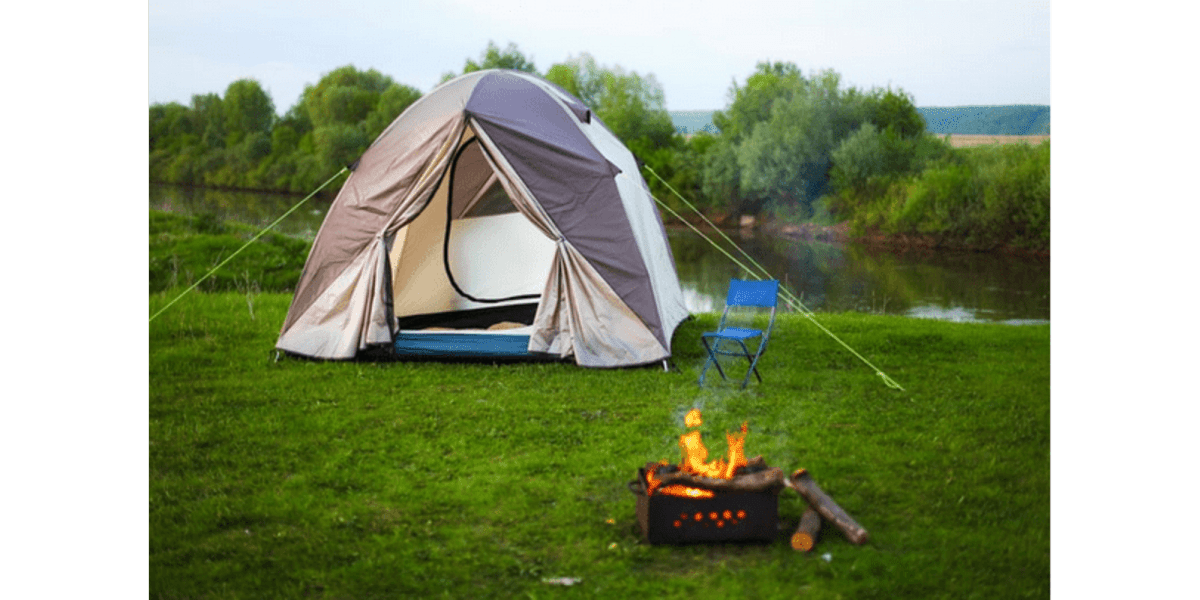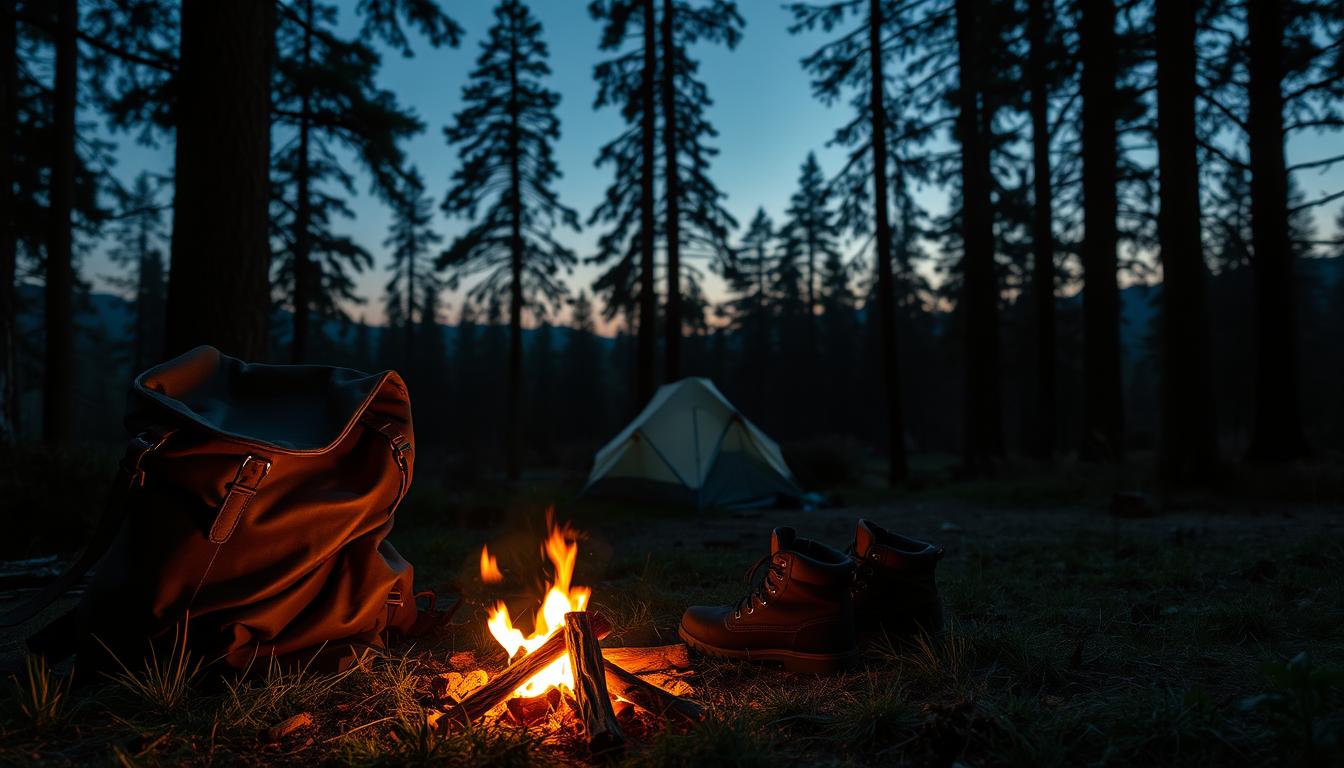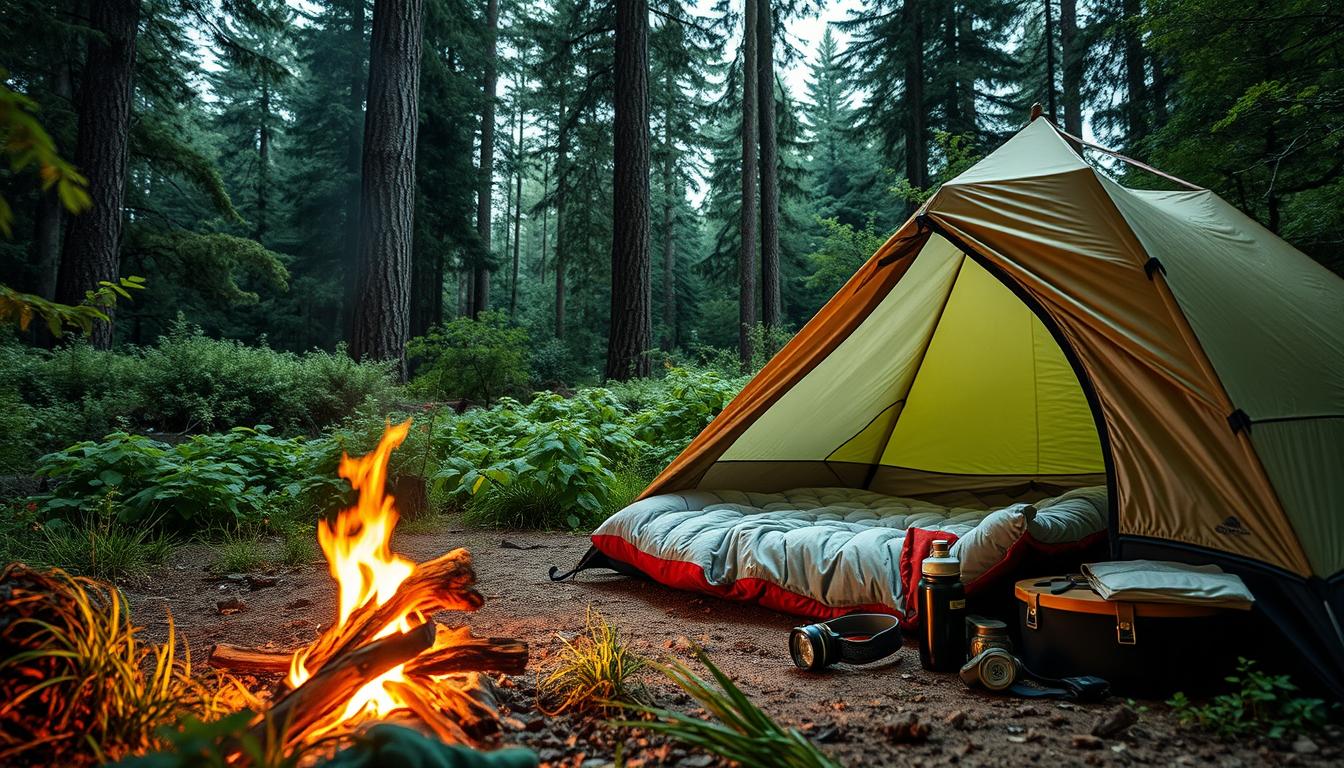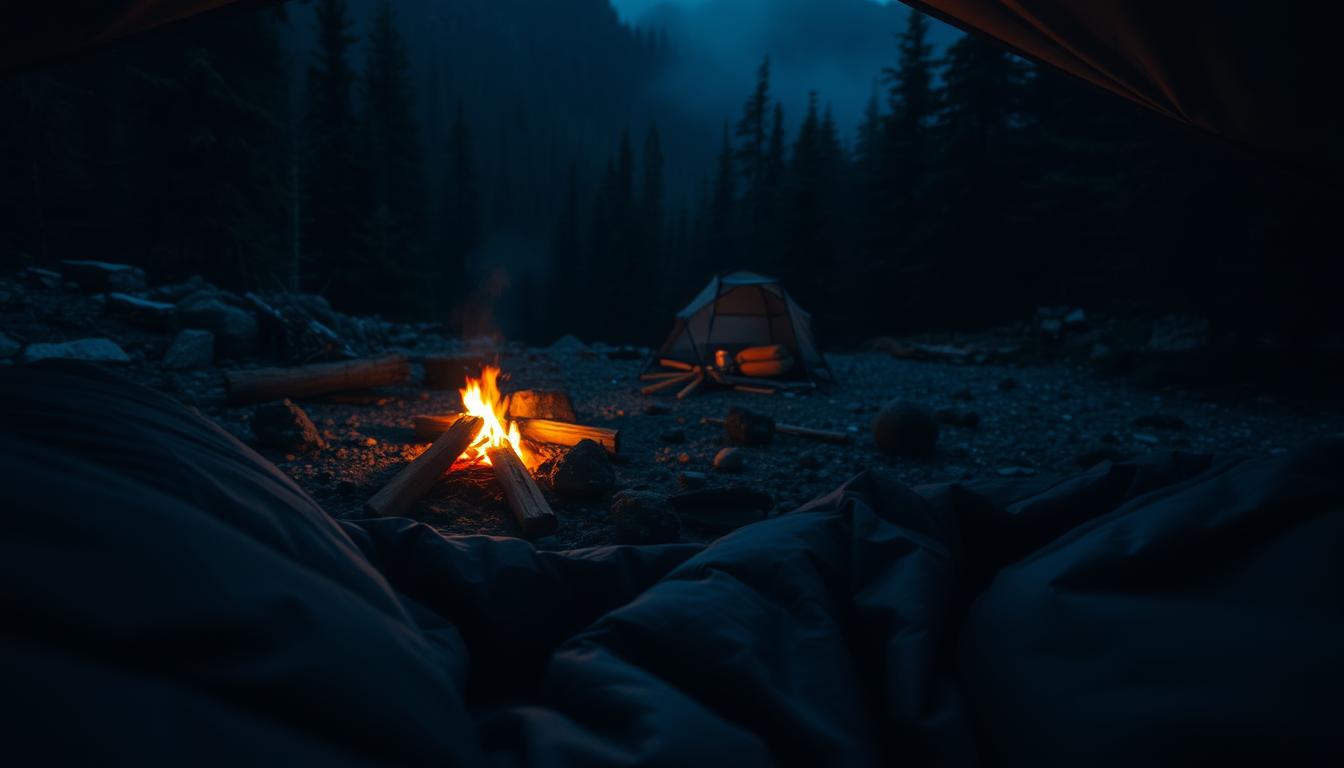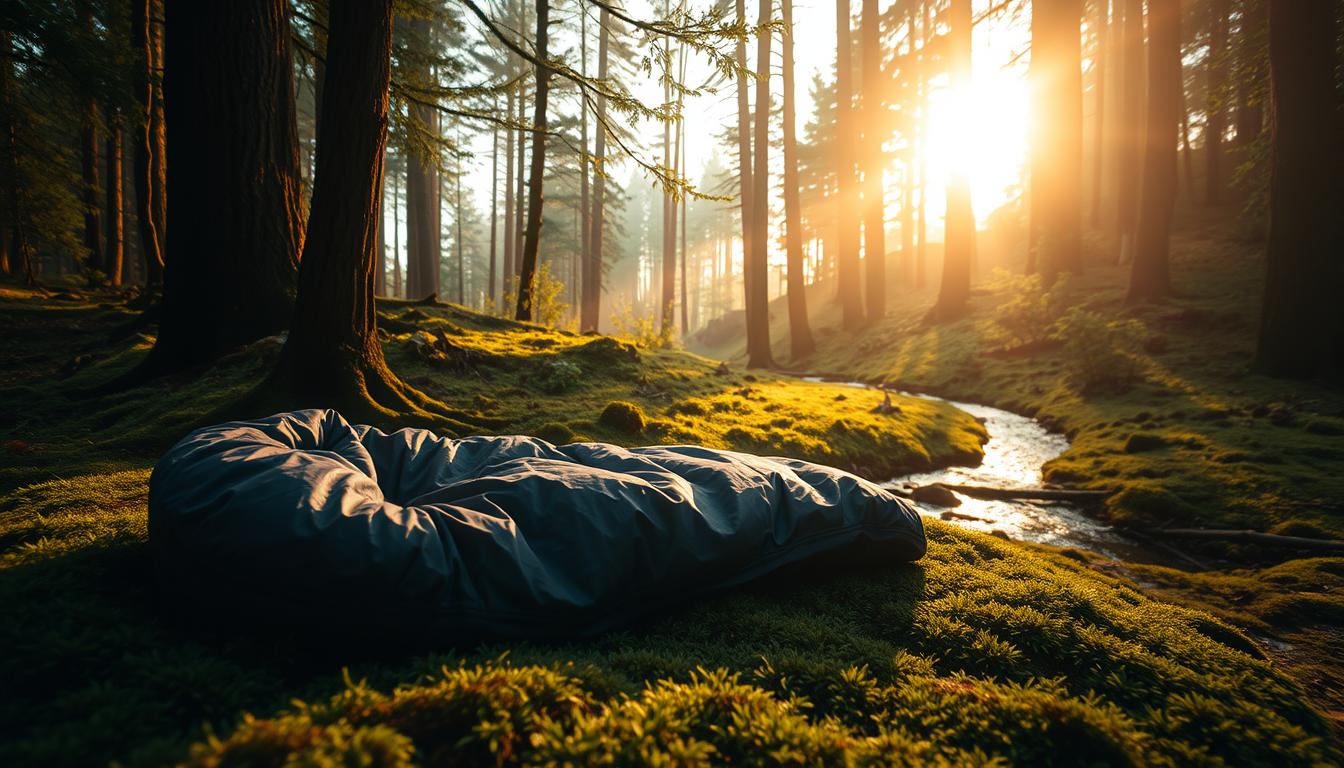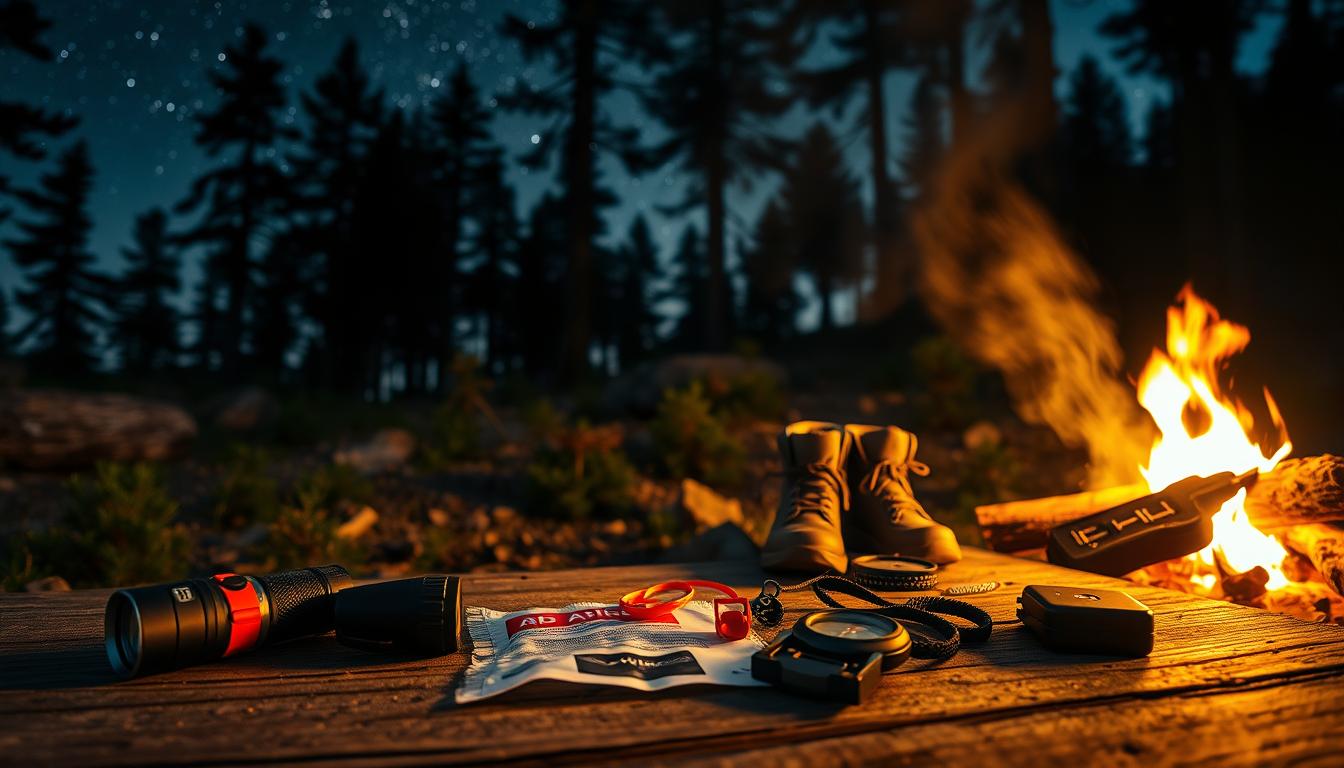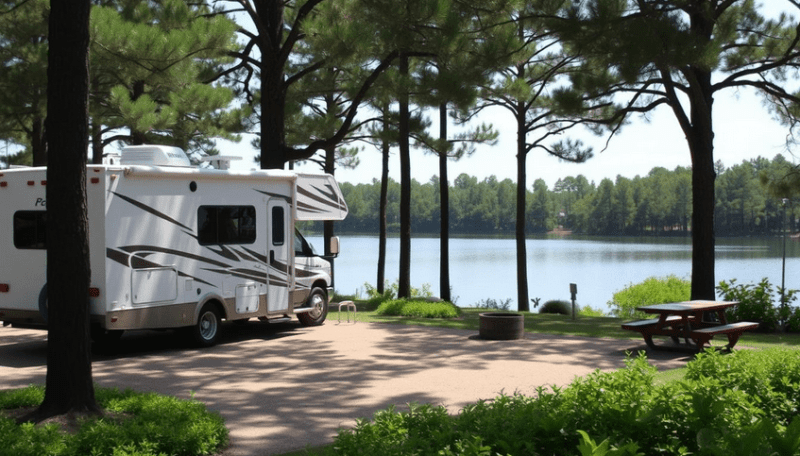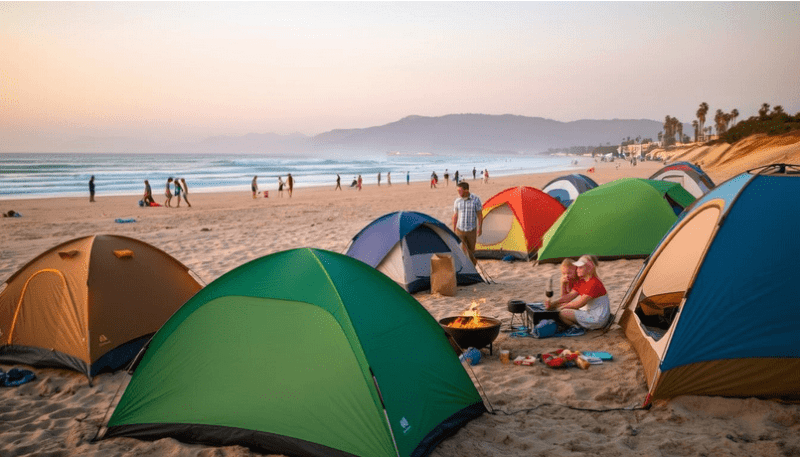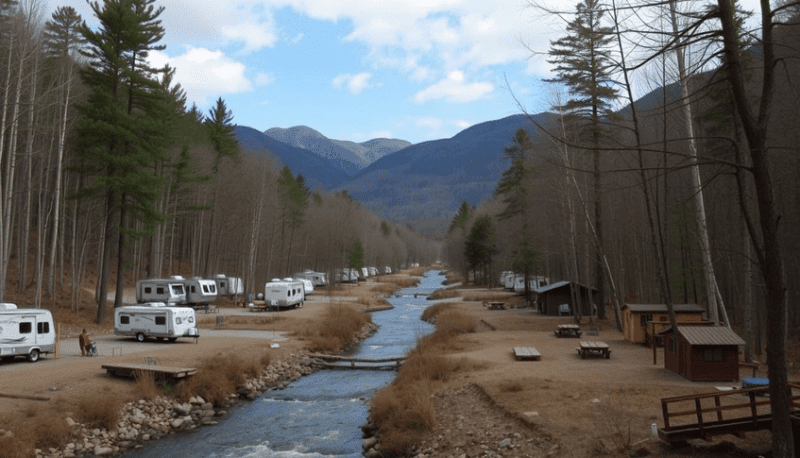Sleeping Outdoors:
Starting your first camping trip can be thrilling and a bit scary. As someone who loves the outdoors, I know how you feel. It's important to learn how to survive in the wild for a great first night.
Camping isn't just about the gear; it's about knowing your surroundings and getting ready mentally. Safety at night means more than just keeping safe; it's about making a cozy and secure spot in nature. Tips for new campers often include practical skills that make your first night memorable and fun.
To handle your first night outdoors well, you need to be prepared and positive. Knowing your area, having the right stuff, and being able to adjust will make your experience better than you expect.
Key Takeaways
- Prepare mentally and physically for your first outdoor sleeping experience
- Pack essential gear for comfort and safety
- Choose a suitable campsite with natural wind protection
- Practice setting up your sleeping area before the actual trip
- Embrace the learning process and stay flexible
Essential Preparation for Your First Outdoor Sleep Experience
Starting your first outdoor sleep adventure needs careful planning. I'll show you how to prepare for a safe and comfy wilderness trip. Getting ready well can turn anxiety into excitement for your camping trip.
https://youtube.com/watch?v=v1J4q2VyWVI
Choosing the Right Location for Beginners
Finding the perfect camping spot is key for new campers. Look for a place that's safe and peaceful. It should be:
- Flat and free from sharp rocks
- Not on wildlife paths
- Safe from strong winds
- Near water but not right on it
Weather Considerations and Timing
Knowing the weather is vital. The best sleeping temperatures are 10 to 20 degrees Celsius. Always check the forecast and plan for mild weather for your first camping trip.
"Preparation is the secret to comfortable camping" - Experienced Outdoor Enthuasiast
Basic Gear Checklist
Having the right gear is essential. Here's a list for beginners:
| Category | Essential Items | Weight Recommendation |
|---|---|---|
| Shelter | Lightweight tent or tarp | 2-4 lbs |
| Sleeping | Sleeping bag, sleeping pad | Under 3 lbs |
| Safety | First aid kit, flashlight, navigation tools | Less than 2 lbs |
Your backpack should weigh no more than 20% of your body weight. Practice setting up your gear at home. This will make you more confident and ready for your first night under the stars.
Setting Up Your Sleep System Properly
Creating the perfect sleep system is key when camping outdoors. My 38 years of camping have shown me how important preparation is. The right gear can make your camping sleep cozy and comfortable.
- Choose a sturdy tent like the Nemo Wagontop 4P (6.5 feet in every dimension)
- Select an insulated sleeping pad with high R-value
- Invest in a quality sleeping bag rated for expected temperatures
- Pack additional comfort items for staying safe while camping outdoors
The Exped MegaMat Duo is my top pick for a sleeping pad. It's huge, measuring 78 inches long and 52 inches wide. Its R-value of 9.5 keeps you warm down to 10 degrees Fahrenheit.
"Proper preparation prevents poor performance in outdoor sleeping environments."
Here are some tips for a great sleep setup:
- Do 20 sit-ups before sleeping to boost metabolism
- Eat a nutrient-rich dinner for body heat production
- Store sleeping bags in plastic liner bags to protect from moisture
- Keep food at least 100 feet away from your sleeping area
Remember, a well-planned sleep system is your key to comfort and safety in the great outdoors.
How to Manage Your First Night Sleeping Outdoors
Starting your first camping trip can be both thrilling and scary. As a beginner, I know how tough it is to sleep outside. Here are some tips to make your first night comfortable and worry-free.
Getting ready for outdoor sleep is essential. Many first-timers worry about sleeping alone outside. Here are ways to tackle these worries:
Dealing with Nighttime Sounds
Strange noises can freak out new campers. Try these methods to handle nighttime sounds:
- Pack high-quality earplugs to block out unfamiliar sounds
- Use a sleep mask to create a sense of sensory isolation
- Practice deep breathing techniques (75% effective in helping fall asleep)
Managing Anxiety and Fear
It's important to beat camping fears to enjoy the outdoors. Here are some tips:
- Bring familiar comfort items from home
- Practice mindfulness and breathing exercises
- Start with camping in a familiar location (50% of new campers prefer this)
Creating a Comfortable Sleep Environment
Your camping gear is key to a good night's sleep. Follow these tips for your sleeping bag and tent:
- Choose a mummy-style sleeping bag for better warmth
- Ensure your sleeping bag matches the expected nighttime temperature
- Keep a warm hat or extra layer accessible
- Stop drinking fluids after dinner to avoid midnight bathroom trips
Remember, 90% of first-timers find their first outdoor sleep helps them understand nature better. Enjoy the journey and connect with the outdoors!
Temperature Management and Staying Warm
Keeping warm is key for safety and comfort in the wild. Choosing the right campsite is important. It can turn a bad night into a cozy one.
Your sleeping system is your main defense against cold. An insulated sleeping pad with an R-value of 3.5 or higher is vital. Heat can escape 3 times faster through the ground than through air. So, your sleeping pad is a must-have.
- Choose a sleeping bag rated for expected temperatures
- Use a sleeping pad with proper insulation
- Wear moisture-wicking base layers
- Pack high-calorie snacks for internal warmth
Layering is essential for staying warm. Eric Larsen, a pro explorer, says, "There's no such thing as a cold night's sleep, only not enough layers." Wear breathable polyester underwear. Also, add a lightweight jacket inside your sleeping bag if it gets really cold.
| Sleeping Bag | Temperature Limit | Recommended Use |
|---|---|---|
| Cloud Peak 400 | -12°C | Cool mountain nights |
| AlpineDream 1000 | -18°C | Extreme cold conditions |
Be careful with moisture. Wet clothes can make you lose heat up to 25 times faster than dry ones. Listen to night sounds and stay aware of wildlife. Keep warm with the right layers and gear.
Natural Sleep Cycles and Circadian Rhythm Adjustment
Outdoor sleeping opens a world of natural sleep rhythms. As a first-time camper, I learned that survival is more than gear. It's about understanding our bodies and nature's sleep mechanisms.
Our bodies have an internal clock for sleep and wake. In the wilderness, this rhythm is very clear. Here's how circadian rhythms work:
- Circadian rhythms control alertness over a 24-hour period
- Nearly all living organisms have these biological cycles
- Darkness triggers melatonin production, inducing sleepiness
Understanding Your Body's Natural Clock
Camping helps reset your sleep and internal rhythm. Natural light is key for adjusting your sleep cycle. By following sunrise and sunset, you'll sleep more naturally.
Benefits of Natural Light Exposure
Morning sunlight boosts sleep quality. Research shows our history ties us to daylight cycles. By following these natural cues, you'll sleep better and be more alert during the day.
Adapting to Nature's Schedule
To improve your outdoor sleep, try these tips:
- Wake up with the sun
- Limit artificial light after sunset
- Maintain consistent sleep times
- Listen to your body's natural rhythms
Adapting to nature's schedule is more than survival. It's about reconnecting with our basic biological processes.
Safety Measures and Night Protocols
When you sleep outside, knowing how to stay safe is key. I've learned that being prepared is the best way to avoid risks on your first night out.
- Choose a campsite away from hazards like dead trees or rocky overhangs
- Clear the ground of sharp objects and check for animal trails
- Set up a barrier with your gear to protect yourself
- Keep emergency supplies within reach
Make sure you have the right safety gear. A headlamp, first-aid kit, emergency whistle, and multi-tool are must-haves for safety at night. Keep these items where you can grab them quickly if needed.
"In nature, awareness is your most valuable survival tool." - Wilderness Safety Expert
When it comes to sleeping bags, look for ones that are warm but also let you move easily. A lightweight bag with good insulation will keep you cozy and safe all night.
Being aware of wildlife is also important. Store food in sealed containers or bear-proof bags, and hang them away from your sleeping area. This keeps animals away and ensures your safety at night.
- Use rope to hang food at least 10 feet high
- Keep cooking areas separate from where you sleep
- Pack scent-proof containers for food storage
Being well-prepared turns what could be scary into something exciting for your outdoor adventure.
Conclusion
As an outdoor lover, I've found that learning to sleep in the wilderness takes time. It starts with a good tent pitching guide and picking the right campsite. It usually takes 2-3 nights for your body to get used to sleeping outside.
Wilderness safety is more than just the right gear. Knowing about nocturnal wildlife can help you relax and enjoy your time outside. Whether you're in a hammock or a bivvy bag, making your space comfy is key. Start small, like camping in your backyard or in a car, to get used to it.
Stargazing can make your nighttime outdoors magical. Being in nature helps release serotonin, which lowers stress and boosts mood. Remember, each time you sleep outside is different. With practice, you'll learn to love the night in nature.
Your journey to sleep outside is unique and keeps changing. Be open to learning, stay ready, and most importantly, enjoy the amazing things the sky has to offer. The wilderness is full of wonders - all you need is to be curious and adventurous.
FAQ
Q: How do I choose the right location for my first outdoor sleeping experience?
A: When picking a campsite, look for flat ground away from hazards like dead trees or rocky areas. Make sure it's close to water and has natural wind breaks. Avoid low spots that might get wet.
Check local rules and choose established campsites if you're new. Find spots with tree cover but avoid areas where big branches could fall.
Q: What essential gear do I absolutely need for my first night camping?
A: You'll need a good sleeping bag for the weather, a sleeping pad for comfort, and a tent or shelter. Don't forget a headlamp, warm clothes, a first-aid kit, and water.
Bring clothes for the weather, a waterproof ground cloth, and a way to call for help like a phone or satellite messenger.
Q: How can I manage anxiety during my first night sleeping outdoors?
A: Prepare well and practice mindfulness. Bring comfort items like a blanket or pillow. Follow a routine like at home.
Use breathing exercises to calm down. Remember, most sounds are safe. Camping with a friend can help you feel more confident.
Q: What's the best way to stay warm while sleeping outdoors?
A: Wear layers, starting with moisture-wicking clothes and insulating mid-layers. Choose a sleeping bag for the weather, and use a sleeping pad. Wear dry socks and a hat.
Eat a snack before bed to stay warm. Stay hydrated but not too full before sleeping.
Q: How do I protect myself from wildlife while camping?
A: Use bear-proof containers or hang food away from camp. Keep your area clean and free of food smells. Make noise to alert animals.
Store toiletries and scented items with food. Carry bear spray in areas with big predators. Learn about local wildlife before your trip.
Q: What should I do if I hear strange noises at night?
A: Stay calm and remember most sounds are from small animals or nature. Keep a flashlight ready and avoid panicking. If worried, make noise to alert wildlife.
Learn local wildlife sounds before your trip. This helps you know what's safe and what's not.
Q: How can I ensure I get a good night's sleep while camping?
A: Use a good sleeping pad and sleeping bag. Wear clean, dry clothes and use earplugs if needed. Practice setting up your tent before.
Choose a flat campsite and follow a bedtime routine like at home. This helps your body relax.
Q: What emergency preparations should I make for my first camping trip?
A: Make a first-aid kit and bring emergency devices. Share your trip plan with someone back home. Pack extra food, water, and warm clothes.
Carry a multi-tool, emergency blanket, and fire-starting materials. Learn basic first aid and survival skills. Always have a backup plan and know emergency exits.
DISCLAIMER
This document is provided for general information purposes only and should not be relied upon as providing legal advice, technical, or specific operational guidance to the reader, whether as to the practices described in the document or the applicable legal requirements and regulations. bestcampingdeals.com expressly disclaims any responsibility for liability arising from or related to the use or misuse of any information in this document.
